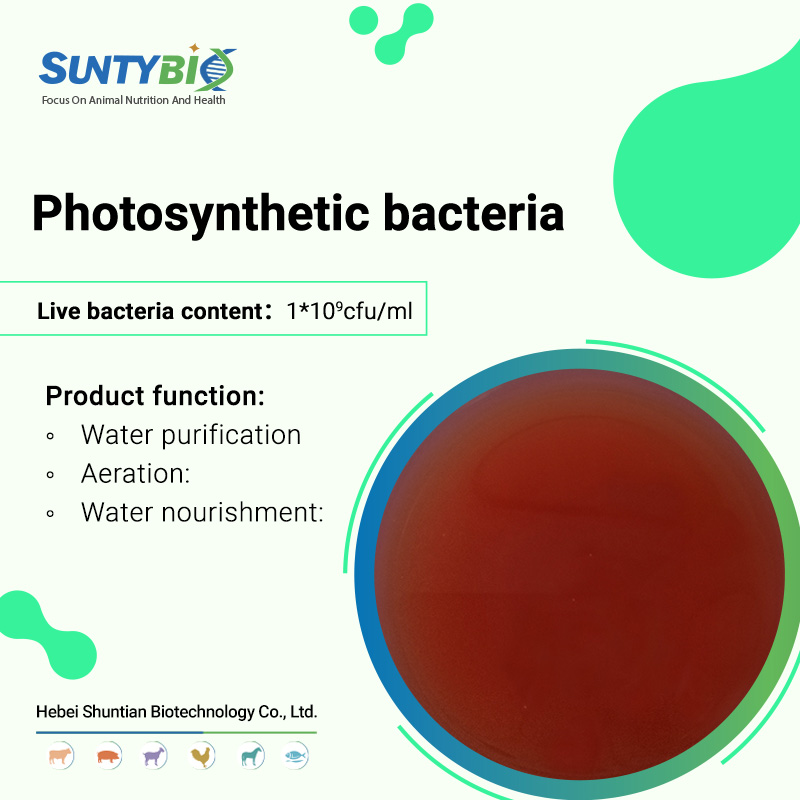How to determine if the swamp red pseudomonas is inactivated when used in aquaculture?
In aquaculture, the inactivation of swamp Rhodopseudomonas species can be determined from the following aspects:
Appearance observation
Color change: Normal swamp red pseudomonas bacterial liquid usually appears wine red, blood red, or brick red, and has a bright color. If the color of the bacterial solution becomes dull and dull, such as appearing dark, black, yellow, or green, it may indicate that the bacterial strain has been inactivated or contaminated.
Precipitation situation: Observe the bottom of the bacterial solution bottle. If there is a large amount of granular flocculent sediment at the bottom, and it is not a slight sediment caused by temporary vibration during transportation, but a large amount of sediment after a period of standing, it indicates that the bacterial strain may age, die, and become inactive.
Turbidity and wall adhesion phenomenon: Normal bacterial liquid is relatively clear. If the bacterial liquid becomes turbid or the bottle wall containing the bacterial liquid is heavily adhered, and the color of the poured bacterial liquid is lighter, this may also be a sign of bacterial strain problems.
Cultivation characteristic testing
Growth condition: Take a small amount of bacterial liquid and inoculate it onto a suitable culture medium, such as van Niel culture medium prepared according to the standard. Cultivate it under suitable conditions, generally around 30 ℃, light intensity of 2000-3000lx, anaerobic or microaerophilic environment, etc. If there is no obvious colony growth on the culture medium after 24-48 hours, or if the bacterial liquid does not show any signs of growth such as turbidity or red color, it indicates that the strain may be inactivated.
Breeding speed: Compared with normal vitality strains under the same conditions, if the breeding speed of the batch of strains significantly slows down, and if the concentration of the bacterial solution does not reach the normal level after the same time of cultivation, it can also be inferred that the vitality of the strains is poor or even partially inactive.
Microscopic observation
Morphological characteristics: Take a drop of bacterial solution and place it on a glass slide. Under a microscope, normal swamp red pseudomonas appear Gram negative and curved rod-shaped. If abnormal bacterial morphology is found, such as deformation, rupture, or damage, it may be a manifestation of bacterial inactivation.

Mobility: Pseudomonas aeruginosa has a certain degree of mobility, and Brownian motion of the bacterial body can be observed under a microscope. If most of the bacterial cells show no signs of movement and are in a stationary state, it may also indicate a loss of bacterial vitality.
functional testing
Water purification ability: The bacterial strain is introduced into water samples containing certain pollutants, such as ammonia nitrogen, nitrite, etc. After a period of time, water quality indicators are tested. If the content of ammonia nitrogen, nitrite and other substances in the water does not significantly decrease, it indicates that the bacterial strain may have lost the ability to decompose and transform these substances, that is, it has become inactive.
Effect on aquatic animals: Inject appropriate amounts of bacterial strains into the breeding pool, observe the feeding, growth, and health status of aquatic animals. If the feeding and growth of aquatic animals do not improve after release, or the incidence of diseases does not decrease, and there is no significant difference compared to before release, it may be that the bacterial strain has not played a role and there is a possibility of inactivation.

Phone: +86-317-2135910
E-mail: Erica@stbiol.com
Address: Machang Town,Qing County ,Cangzhou City ,Hebei,China
Hebei Shuntian biotechnology Co.,Ltd.
Add:Machang Town,Qing County ,Cangzhou City ,Hebei,China
Tel: +86-317-2135910
E-mail:Erica@stbiol.com
© Copyright - 2018-2020 : All Rights Reserved.